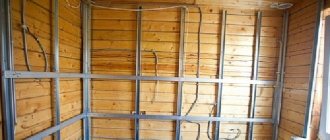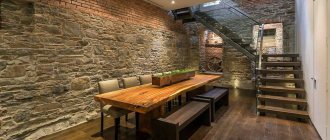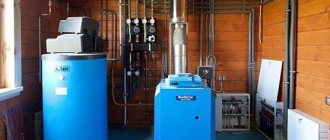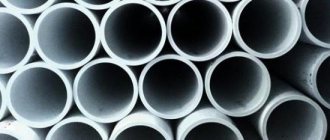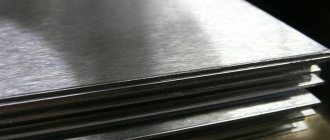Paint selection
The choice of paint composition primarily depends on what material the chimney is made of, because paint for bricks will not be able to fully protect the metal from adverse conditions. Therefore, before purchasing a paint and varnish product, you should carefully read its characteristics and find out what materials it is intended for. But there are also uniform requirements for all paints and varnishes:
- Drying time. A very important parameter for outdoor work, because with a long drying time, the applied coating can be damaged by weather conditions.
- Temperature range. It is necessary to take into account the approximate temperature of the gases passing through the pipes and the minimum temperature drop in the region.
- Conditional viscosity. The optimal indicator would be 36 conventional degrees.
- Validity. It is determined how long the protective qualities of the dye are maintained.
If all indicators are selected correctly, then a dense thermal and moisture-resistant film is formed on the pipe surface, which will last for a long time.
Popular paints and varnishes have the following properties:
- resistance to degradation caused by oxidation;
- resistance to aggressive atmosphere;
- low surface tension;
- water-repellent ability;
- corrosion resistance;
- heat resistance.
The maintenance-free service life increases to 15 years thanks to these indicators. It is for this reason that paint and varnish materials are used to protect many objects:
- household and industrial heat exchangers;
- pipelines with superheated steam;
- chimneys;
- collectors.
All heat-resistant paints and varnishes in liquid form are highly toxic, and when applying them you must use protective equipment (respirator, gloves and clothing covering the skin).
A good composition for strengthening the surface are organosilicon materials with high moisture-repellent properties, which also have good adhesion to various building materials.
To paint the outside of chimneys, the following coatings are suitable:
- The best option for priming the surface is gray enamel KO-8111, which has increased heat resistance.
- For bright signal painting, OS-12-03, red and white paints are usually used.
KO-8111 paint perfectly withstands temperatures up to 620 °C, so it is often used when painting pipes of boiler houses and other industrial facilities. It is ideal for external anti-corrosion work on heating and water supply pipelines. This enamel is also used for painting steam lines and other process pipes.
KO-8111 enamel has good moisture resistance and is also resistant to temperature changes. As the temperature increases, the paint applied to the surface even becomes stronger.
For bright signal painting of pipes, red and white paint is applied to the dried, primed surface. This composition is applied in two or three layers, and the paint layer is 35-55 microns thick, with a consumption of 125-160 g/m2 per layer.
Organosilicon paints and varnishes are also considered a suitable material for painting. They have a lot of advantages:
- Synthetic polymers have high durability and resistance to damage and abrasion.
- The use of this material guarantees increased durability of the coating, since organosilicon paints are unique in their heat resistance. They are able to withstand long-term operation at temperatures up to 720 °C.
- This paint and varnish material has low surface tension. It forms a coating that has high weather resistance as well as reduced retention of dust and dirt.
These materials are used to paint:
- car mufflers, various engine parts and even jet engine nozzles;
- heat exchangers, manifolds and pipelines;
- metal and brick pipes of stoves in houses, saunas.
Once the silicone paint dries, it forms a very durable coating. It is fire resistant and has many other protective properties.
Now there is an abundance of silicone paints and enamels for metal and brick pipes
When choosing coatings, it is important to understand their protective capabilities
Dyeing technology: features
Before you begin painting gas pipes, you need to carry out preparatory work.
Pipe cleaning is carried out with a metal brush, which will remove traces of rust and corrosion. Using solvents will make the job easier. For safety reasons, it is recommended to use a respirator to avoid inhaling harmful fumes.
After cleaning, you need to degrease the surface. Degreaser consumption rates per 1 sq. m are indicated on its label. The next step is to coat the surface with two layers of primer. The mixture is applied with a brush.
The primer dries within 24 hours. If the temperature is below 15C, the drying time increases. You need to wait the same amount of time before painting. The paint is applied in an even layer. Avoid drips.
It is necessary to apply the coating in a thick layer. After the paint has dried, you can begin applying the second coat. This ensures maximum protection of the metal surface.
The gas service recommends painting communications yellow. However, this requirement is not regulated for apartments and residential premises of private houses. The color of the gas pipe in the apartment can be selected in accordance with the interior.
It is recommended to paint with a small brush, applying in small portions to avoid smudges. The brush must be held perpendicular to the pipe. To paint the back, bend the brush. It is advisable to coat the pipe with paint before finishing the walls.
When using alkyd paint, a second coat is applied after 4-6 hours. Modern types of paint dry much faster. The exact time is indicated by the manufacturer on the packaging.
Rules for painting outside and inside the apartment
GOST 14202-69 defines exactly what color and with what identification marks a pipeline for any purpose should be painted. Thus, both the team arriving for repairs and people living nearby can immediately determine which communications have been damaged and what danger they pose.
Gas pipes are designed to transmit different gases and are marked accordingly:
- the natural gas pipeline is painted yellow without additional rings;
- pipes for acetylene transmission are painted white;
- oxygen supply products are blue;
- compressed air is indicated in deep blue;
- carbon dioxide transfer is indicated in orange.
Painting of a gas pipe running along the facade of a building and on the street is rarely done along its entire length. Firstly, the highways are too long, and secondly, multi-colored segments spoil the appearance of the facade. As a rule, individual areas are painted in order to designate the system.
It is recommended to paint metal gas ducts on the façade of a building in colors that reduce the thermal effect of sunlight.
Identification staining is used in certain areas: at junctions during branching. Painting gas pipes on the facade of a house that pass through a wall must include an appropriate color marker. Painting a pipe passing through a wall.
Inside a building or home, gas pipes are painted in accordance with the requirements of the interior. As a rule, the basic coloring of linear meters of a gas pipeline is white. A gas pipe passing through a wall is not specially marked. Painting services are provided by the builders themselves.
What is this for?
Gas pipelines pose a potential hazard due to possible gas leaks and therefore require color coding.
It is used in industrial enterprises and when laying overhead networks.
For short communications and for external networks, continuous identification painting is performed. Marking areas are located at connections, branches, inputs and outputs of production facilities. The corresponding marker is present in the painting of gas pipes passing through the ceilings and walls of buildings.
In addition to its signal function, this finish provides anti-corrosion protection to metal surfaces. For this purpose, heat-resistant oil and nitro-enamel paints are used, resistant to temperature changes and the influence of precipitation.
Painting pipes in an apartment yourself - quickly and easily
17.10.2017
- 1 Preparation
- 2 Painting
- 3 Painting gas pipes
It is impossible to imagine modern residential buildings and industrial structures without all kinds of communications: water pipes, gas pipelines, cables, and so on. Currently, many pipelines (for example, cold and hot water supply) are made of plastic. However, metal pipes continue to be used. To increase service life and improve appearance, these pipelines need to be painted.
As a rule, the reasons for deciding to paint pipes are:
- Unsatisfactory condition of the pipe surface.
- Corrosion protection.
- Improving the interior of the room.
Preparation
The choice of painting method and type of paint depends on the material from which the pipes are made, as well as on their operating conditions. For example, communications located in the open air should be painted with red lead, due to which a mask of iron oxide and lead is formed on the surface. This mask is able to protect pipelines from the destructive effects of the environment.
The following products are usually used for painting pipelines:
- alkyd enamel;
- water-dispersion paint;
- acrylic enamel;
- Oil paint.
Acrylic enamel is resistant to high temperatures (up to 1000 degrees). It is also resistant to significant temperature changes. The advantages of water-dispersion paint are fast drying speed, high quality of adhesion to the surface and environmental friendliness. Pipes painted with water-dispersion paint can be used for many years. Such paint, in turn, is divided into two types: for cold and hot surfaces. That is, painting heating pipes will require the use of paint intended for hot surfaces.
Acrylic enamel has the ability to retain color for quite a long time (it is resistant to ultraviolet rays). In addition, this paint makes the surface glossy. Before using this type of paint, the surface must be treated with a primer. And finally, oil paint is suitable for processing almost all types of pipes. However, over time, the original color is lost.
For example, to paint a rusty metal pipe, it is best to use paints from the enamel group. Within a day, the painted surface will be dry. This paint will protect the pipe from corrosion for 7 years. For plastic pipes, the best option would be water-based or oil-based paint.
For painting we will need the following:
- brush;
- dye;
- sandpaper;
- gloves;
- rag;
- primer;
- cuvette;
- ladder (when working at height).
Before you start painting, it is advisable to clean the surface of the pipes from old paint. After this, you need to thoroughly clean the surface with sandpaper. There should be no rust. All cracks and irregularities must be repaired using putty. Before painting plastic pipes, they need to be washed with warm water. After this, you need to give them time to dry.
The old paint does not need to be removed if the surface of the pipe has no defects: damage, bulges, cracks. Otherwise, it is better to remove the old layer of paint.
Now we determine how much paint is needed. Here are some recommendations on this matter:
- For hard to reach places you will need more paint.
- The first coat requires more paint than the second.
- A smooth surface will require less paint than a rough surface of the same area.
Painting
Before painting, it is recommended to protect the floor under the pipes with film or newspapers. We start painting from the top of the pipes and move towards the bottom. This way the layer will be even. We apply the first layer of paint to the entire surface - do not miss anything. Only after applying the first layer to the entire surface can the second be applied. Applying two layers allows you to get a perfectly painted, smooth surface.
How to quickly paint pipes? To save time, you can use a spray can or spray gun. In addition to saving time, this will give us a high-quality painted, smooth surface. When working with a spray can, you need to hold it at a distance of 30 cm from the surface and make zigzag movements from top to bottom. When using a spray gun to paint the battery, it is recommended to remove it in order to properly treat all hard-to-reach places.
After painting, you need to wait a certain time for the paint to dry and thoroughly ventilate the room.
Preparing for painting
The quality of painting radiators depends on how well you prepared them for this operation. Often the preparatory stage takes longer than the painting itself, but knowing how to remove paint from a heating pipe using special means can speed it up a little. Preparation for applying the coloring composition is as follows:
- Removing dust and dirt with a wet cloth.
- Removing old layers: apply a solution to wash it off on the pipe and cover it with film. Remove it using a spatula, a wire brush attached to a drill, or a grinder. It is advisable to protect your nose and mouth with a respirator or gauze bandage, and your hands with gloves.
- Sanding the surface with sandpaper, cleaning places where there is rust until the metal shines.
- Degreasing with white spirit or some slightly alkaline solution.
- Applying an anti-corrosion primer to a cleaned surface to help the paint adhere better and prevent rust. A primer with an alkyd base is best.
The durability and quality of the coating also depends on a good primer. Therefore, choose one that states that it has anti-corrosion properties, otherwise rust will reappear over time.
Now many manufacturers produce paints that already contain a primer, as well as a rust converter. If you wish, you can buy such a composition and not waste time applying the foundation.
Some tips for coloring
If you have already decided what paint to paint the necessary heating elements and have purchased the right one, also consider a few recommendations to get the maximum quality of painting. An important requirement for painting a heating system is its temperature at that moment.
Heating pipes and radiators should be painted when they are cold, that is, in the summer. If there is a need to do this urgently during the heating season, you need to turn off the heat supply for a while.
Recommendations:
- apply the paint evenly using a brush and spray gun;
- make sure that there are no unpainted areas, even where they are not visible;
- start work from the top of the pipeline;
- Having applied the first layer, let it dry well and only when it is completely dry, paint it again to get a uniform, beautiful coating;
- If smudges form, immediately shade them with a brush or remove them with a cloth.
If you have plastic heating pipes, you don’t need to paint them, they already look good. However, if desired, you can apply special paint for plastic tubes - usually acrylic, for which the surface must be primed.
Having carefully studied the preparation and painting technology, you will be able to correctly apply the material for painting heating pipes. This will not only give them an aesthetic appearance, but also ensure their long service life.
Color solution
What color should you paint gas lines?
According to the source of information (Safety Rules for the Gas Distribution System), painting occurs as follows:
1. A gas pipeline passing above the ground must be painted with two layers of yellow paint. Varnish and enamel of a similar color are also allowed. The dye must meet the requirements of the substance for work on the outside of the product. Color marking is necessary to identify an object.
2. The gas system, which runs over the facades of the structure, may have the color of the structures that enclose it.
Painting of internal gas pipeline structures inside residential premises and the color scheme for them are not provided at all.
Owner search
Who is responsible for painting the gas pipe?
Many people ask this question. Unfortunately, the person responsible for such a process has to be found separately in each individual case. In such cases, you must be guided by the gas pipeline line maintenance agreement.
In certain areas, responsibility is distributed in this way
:
1. In apartment buildings, pipeline lines inside each apartment must be painted by the owners of the apartments. Those gas pipes that run along facades, entrances or streets must be painted by the gas supply companies or local utility service (the terms of the service contract must contain such obligations). To divide the zone, you must be guided by the walls of the apartments
It must be taken into account that such duties relate only to painting pipes. But maintenance actions regarding the shut-off elements of the valves should be performed only by the gas service. 2
In private houses, the gas pipeline located on a private plot is painted by the owners of the house. The gas pipeline located in a public area was painted by representatives of the gas service. A gas pipeline that runs through the private territory of a house may be controlled by an organization that supplies gas, but then such an authority may require house owners to pay for the service of painting gas pipeline structures
2. In private houses, the gas pipeline located on a private plot is painted by the owners of the house. The gas pipeline located in a public area was painted by representatives of the gas service. A gas pipeline that runs through the private territory of a house may be controlled by an organization that supplies gas, but then such an authority may require home owners to pay for the service of painting gas pipeline structures.
What is written in the regulatory documentation?
Regulatory documents regulate only the color in which gas pipes must be painted. According to the card file of color standards, the gas pipeline must be painted yellow N 205-206 (GOST 14202-69).
On the facades of houses and on routes passing along the street, gas pipes are painted a single yellow color. Gas pipes can be painted in the color of the facade in exceptional cases after obtaining permission from the operating organization. The color of communications inside private houses and apartments is not regulated.
Requirements for the color of pipes are not just a whim of the gas service. This is a signal coloring, which indicates the substance located inside the pipeline being transported. Thanks to painting, in the event of a gas leak, emergency service personnel will be able to quickly detect the problem and eliminate it.
If the pipes are painted a different color, then in an emergency situation, if the owner of the house is not present, the repair team may not be able to find their bearings and may not turn off the gas in time, which can lead to serious consequences.
Also, the regulation “Safety Rules for the Gas Distribution and Gas Consumption System”, clause 2.3.9 PB 12-529-03 states that the paint must be applied in two layers. It is necessary to carry out priming and preparatory work first.
How to calculate paint consumption?
Paint consumption rates can be determined using one of two popular methods:
- determining the rate of paint consumption for painting pipes using an online calculator;
- determine the standards using the hint on the label, which determines the consumption of a specific amount of paint for a certain area.
To calculate the amount of coloring composition using an online calculator, you need to know the following geometric parameters of the pipe:
- section index (mm);
- length (m).
You also need to select one of the options for applying the compositions and the online calculator will give you the approximate amount of paint that will be required to paint the pipe in one or two layers.
Formula for calculating the required volume of paint
There are no general standards for paint consumption for coating pipes. The container of any paint indicates how much is needed to cover 1 m² of surface. It is necessary to take into account that it must be applied in two layers.
The formula for exact calculation is:
S=π×D×L
D is the pipe diameter;
π is a constant mathematical constant (3.14);
L is the length of the pipe.
This formula is used when painting various pipes.
Types of paints for external and internal gas pipelines
Almost any external compositions that can provide reliable anti-corrosion protection are suitable for external gas pipeline structures.
Alkyd enamels (PF-115). A classic option that has been used for many years. The advantages of alkyd enamels are that they are resistant to weathering. After drying, they form a dense layer, the service life of which is at least 5 years.
Polyurethane coloring compounds. Provide good adhesion to the pipe and have a high coefficient of elasticity. The service life of these compounds ranges from 10 to 12 years.
Two-component epoxy compounds. They are resistant to wear and less elastic than polyurethane coatings.
Dispersions of aluminum or zinc powder in varnish, represented by organic material. They are the most resistant to corrosion compounds. The service life of a pipeline structure that has been painted with this composition can reach several decades.
Paint for internal gas pipes should not be vapor permeable to ensure the pipe is insulated from water vapor and oxygen. Almost all types of paint compositions are suitable for painting internal gas transmission lines (for both external and internal work).
Special attention should be paid to fire-resistant coatings, which, when directly exposed to high temperatures, turn into carbon foam. This coating can protect the pipeline from exposure to flame for 45 minutes
Which paint is best suited for heating pipes?
To answer the common question: which paint is best suited for heating pipes, you need to familiarize yourself with the types of coloring compositions:
- acrylic enamels;
- alkyd paints;
- water-dispersed enamels.
Acrylic. Such compositions are quite common today. Acrylic enamels are made based on organic solvents, which affects their smell during painting. They have a sharp, unpleasant odor, but lines painted with such paints retain a dense glossy finish for many years. Another advantage of these paints is that the communications on which they are applied are easy to clean.
What paint to paint a gas pipe in an apartment
» Miscellaneous » What paint to paint a gas pipe in an apartment
Before you start painting the gas system, you need to sand it down to remove any old coating or rusty inclusions. Next, you need to free the pipes from dust accumulations and contaminants. After which, the gas pipes must be covered with a primer material intended specifically for metal products. But after all the work has been completed, the communications begin to paint.
According to the requirements of the state standard, gas lines must be highlighted with yellow paint. This is done so as not to confuse the gas networks with other pipes in the room. Painting is permitted with any type of paint that is suitable for metal products and is suitable for both external and internal work.
how to paint a gas pipe in the house
Previously, pipes on the street were painted red. In most cases, the pipes located in the room acquired the color that matched the interior or was liked by the residents. Pipes in a room can be painted with inexpensive paint, saving money. It will last a long time.
But if the gas system is installed outdoors, then it is necessary to choose a coloring agent that can ensure long-term coverage. It’s better if you first clean the pipes from rusty formations, prime them, and only then paint them, so the coating layer will last longer.
what paint to paint a gas pipe on the street
Material selection
When choosing a primer you need to be careful
You need to pay attention to what is written on the can; you should purchase a primer that is suitable for application over rusty areas
In addition, soil liquid also comes in several versions, namely in different colors, from black to green and blue. Having made a choice of color, you need to calculate the required volume.
It is recommended to buy one liter of varnish and two liters of soil liquid using this formula. It is worth purchasing the varnish that is suitable for coating metal products.
This is necessary so that, due to the porosity of the soil liquid, the wet environment does not get on the metal pipe, as rusty spots will subsequently form.
For this reason, it is worth adding a good quality varnish to the soil mass, which will ensure:
1. Pores will not form;
2. There will be no rust;
3. The pipes will have a glossy appearance for a long time.
After the choice of materials is made, you need to mix them and before applying the mixture to the surface of the pipe, you need to wipe the pipes with a rough sponge. Then, lubricate the gas line evenly, without missing a single centimeter. This can be done directly over the rusty areas. After completing this work, you will immediately see how the appearance of the gas system will change.
Of course, it is worth paying attention to special types of paints that are designed for metal products. Before purchasing, you need to read the information on the jar label, it should say, for example, has anti-corrosion properties, is intended for metal products, may have the inscription 3 in 1
how to paint a gas pipe
In addition, it can quickly ignite, so when choosing it, you should be careful. The main thing is that from the information received it can be concluded that the dye will transform the rusty sections of the pipes, then the painted layer of the gas line will be enough for a long time.
In accordance with building codes and regulations, paints and varnishes are used that can withstand changes in environmental temperatures and the influence of rain, snow, hail and other things.
The main thing to remember is that the coloring agent must be one of the types of oil or nitro-enamel waterproof products. The surface of the pipe must be painted yellow; the valve can be painted blue.
how to coat a gas pipe The state standard determines the colors for painting pipes, depending on the liquid being transported:
1. Pipes transporting water are painted green;
2. In a steam system, the pipes should be painted red;
3. Air ducts in blue;
4. Gas lines are assigned a yellow color;
5. Networks conducting acid should have an orange color;
6. The wire supplying alkali is purple;
7. Lines supplying liquids, both flammable and non-flammable, must be brown;
8. Pipelines transporting other substances have a gray appearance.
Paint for metal products can be found in any construction department.
o-trubah.com
What color should you paint gas lines?
According to GOST, gas pipeline pipes are covered with 2 layers of yellow paint, while painting the valves blue is allowed.
Gas systems installed on the facade camouflage them with the color scheme of the building. Inside the premises, the appearance of communications is brought into line with the style of the interior. Standard painting involves the use of a white solution.
How to paint a pipe in a hard-to-reach place. We paint pipes in hard-to-reach places
/// We paint pipes in hard-to-reach places
Hello. I need to repaint the pipes in one room. My pipe is very close to the wall, and I need to paint there too. Please tell me how best to do this, otherwise the brush won’t fit through?
Seryozha
Report to moderators
First of all, you need to protect the wall from possible contamination. Place a sheet of newspaper behind the pipe and secure it, for example, with masking tape. Put on a disposable glove from the supermarket and take a thin strip of foam rubber. Well, then, you understand. I just grab it by the pipe and pull the foam along the pipe.
Vlad Paraka
Participant
Vlad Paraka
Report to moderators
Seryozha: September 03, 2021 at 5:40
First of all, you need to protect the wall from possible contamination. Place a sheet of newspaper behind the pipe and secure it, for example, with masking tape. Put on a disposable glove from the supermarket and take a thin strip of foam rubber. Well, then, you understand. I just grab it by the pipe and pull the foam along the pipe.
Really good advice, Sergey. Thank you very much. Only now, the gap between the pipe and the wall is very small, I hope that if I make thin foam rubber, everything will work out. I'll take care of this tomorrow. Thank you!
Leonid_32
Forum member
Leonid_32
Report to moderators
For such purposes, special brushes are sold, with a thin and curved handle. There are different sizes. Ask around in stores that sell paint or at the market, it’s always cheaper there. I bought several for myself, and I can paint pipes and batteries anywhere.
No. 5. We hide pipes behind furniture facades
This option is suitable for masking both vertical and horizontal sections, and even gas equipment (meters, dispensers). If you are renovating your kitchen, you can immediately order a false cabinet of a certain size. However, an existing set can be upgraded.
It is enough to make holes for the pipes on the back, bottom and top walls. The cabinet space that will hide the gas pipeline can be used to place kitchen utensils, but a prerequisite is sufficient ventilation , so in the most inconspicuous places you can create several holes (the main thing is not to cover them with jars and pans), or install a lattice screen. The vertical section of pipes can be hidden in a pencil case, the horizontal section in a regular cabinet. The main thing is to provide quick access to communications.
Choosing paint for painting gas pipes
Alkyd paint is most often used to paint gas pipelines, as well as other metal surfaces. Name according to GOST - PF-115. Since it is made from resin, the paint is viscosity and thickness.
It should be noted that it has an unpleasant, pungent odor that takes a long time to dissipate. Another disadvantage is that paint is flammable, and gas is a flammable element.
Among the main advantages of alkyd paint: high strength and resistance to precipitation. It can also be applied to hot surfaces. Another advantage is low cost.
It is not recommended to use alkyd paint in cold weather, since there is a high probability that it will not dry on the surface, but will freeze
When choosing which paint is best to paint the surface of a gas pipe within an apartment, it is not necessary to purchase only the recommended options.
You can use other coloring compounds:
- polyurethane paint - has an elastic structure, good adhesion and durability;
- epoxy - characterized by durability, but not elastic;
- electrically conductive substance - recognized as the most reliable coating due to its high anti-corrosion properties and durability.
Despite the fact that there are paints that can be applied to rust, it is recommended to pre-treat gas pipes: clean the surface of old coating and rust, degrease the prepared surface, and then coat it with a primer.
To paint pipes indoors, it is allowed to use interior paints. The only thing is that the coating should not be vapor-permeable, because the main task of the paint is to insulate the surface of the pipes from oxygen compounds and moisture
Modern dyes intended for gas pipes have specific names. Most often, the word “paint” itself is not on the label, so the average person faces difficulties at this stage.
To apply a protective and decorative coating to a metal pipe, special compounds modified with anti-corrosion additives are used.
The most popular paints for gas pipes today:
- Epostat is an epoxy primer-enamel for metal with anti-corrosion properties, heat- and frost-resistant, quick-drying;
- Zinconol - protects metal in any climatic conditions, has excellent adhesion and protects against corrosion;
- Nerjachim - protects metal, can be applied to rust, protects against corrosion, dries quickly;
- Polyurethol - does not require preliminary priming, is resistant to acids, water, and petroleum products.
The technology for applying paint to a gas pipe is no different from painting any other metal material. The only caveat is that when removing old paint, it is prohibited to use heating devices.
Technological features of dyeing
Many people think about whether it is possible to paint the gas system themselves? Wouldn't that be difficult?
The stages of painting, in general, are no different from the procedure for painting any metal pipe, but have one caveat: in the process of removing the old paint layer, it is prohibited to use heating devices
.
1. A piece of the product must be wrapped in a rag, having previously soaked it with remover. After 20 minutes, you need to remove the softened paint using a spatula.
2. Next, the pipe must be cleaned with a metal brush to rid it of old coating and rusty accumulations.
3. Apply degreaser over the pipes. Gasoline or solvent is suitable for these purposes.
4. Apply dyes in two layers, be sure to dry before applying layers. The time interval between cleaning and painting should be about six hours, since air humidity will quickly cause steel products to rust. For these purposes, use an ordinary brush.
conclusions
Knowing all the listed nuances of painting gas pipelines, you can successfully ensure their long-term coating.
Source
How to paint a gas pipe in an apartment. Painting gas pipes
A common occurrence in our homes is communication pipes. And if some of them can be closed, for example, in a gypsum plasterboard box, then this number will not work with gas pipes. Gas services require that their communications be open so that gas leaks can be detected and measures taken.
There are, of course, ways to get around this rule, for example, by hiding the tubes behind a removable grille. But mostly gas pipes are open. A rusty pipe in the middle of a renovated room does not look very impressive, so something needs to be done, and more specifically, paint the gas pipe. About paints Gas pipes, like any other metal surfaces, are painted with alkyd paint. In appearance, it differs from any other paint in that alkyd is more viscous and thick. This is because this paint is made from resin. You need to work with it extremely carefully: Firstly, it is flammable; Secondly, if such paint gets on the skin, it will not be possible to clean it with soap and water; Thirdly, alkyd paint has a very specific odor, so the room in which it is done painting must be well ventilated. But alkyd paint has plenty of advantages, it is very durable, and in addition it can be applied to hot pipes. In the cold season, this paint can be used, but there is a chance that it will freeze faster than it dries. Therefore, if external work is expected, it is better to carry it out not in severe frost. We are all accustomed to seeing yellow gas pipes on the street, this is also a requirement of gas workers. But there is a caveat: if the pipes go along the facade of the building, they can be painted in the color of the facade. In an apartment, you can paint the pipes in the color you want. Due to the fact that the gas pipe is open, it can be painted in the color of the interior so that it does not catch the eye. Although the more traditional color is white. There are paints that can be applied directly to rust. But still, before painting gas pipes, you need to make the necessary preparation. The pipe must first be sanded, partially or completely removed the old paint, and then degreased. Don’t be too lazy to do this, and then the pipe will be even, smooth and will look quite nice. How paints behave when painted You need to paint with a small brush, and to avoid smudges, it is better to apply it in small doses and perpendicular to the pipe. If the pipe runs along the wall, the brush can be curved to paint the back. But in any case, it is better to paint before further finishing is done on the walls, because it is very difficult to remove alkyd paint, for example, from wallpaper. If you can’t paint the pipe well in one go, you can repeat the procedure after waiting a certain amount of time, sometimes 4-6 hours, and sometimes a day, depending on the manufacturer. This paint is also called radiator paint, that is, it is suitable for heating radiators. Another common paint is called PF-115, this is the name according to GOST. Many manufacturers produce this paint.
Gas pipeline painting contractors
The responsible person is regulated for each specific case. It is recommended to use the contract concluded for the maintenance and inspection of the gas pipeline as a guide.
In apartment buildings, the procedure for painting the gas pipe is the responsibility of the apartment owners. The pipeline running along facades, streets and entrances is painted by representatives of the gas service or local utility organization.
In private houses, the pipeline located within the site and private buildings is painted by the owner of the house. Pipes located in areas with public status are painted by representatives of the gas service.


